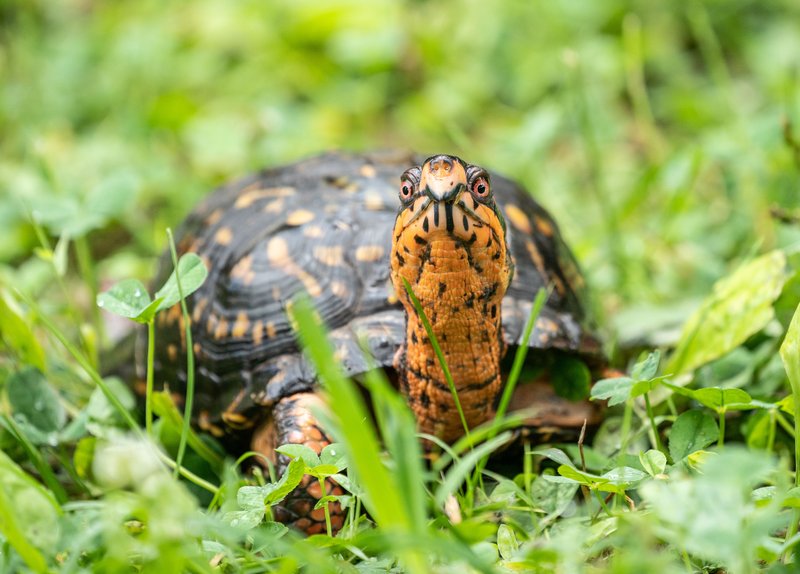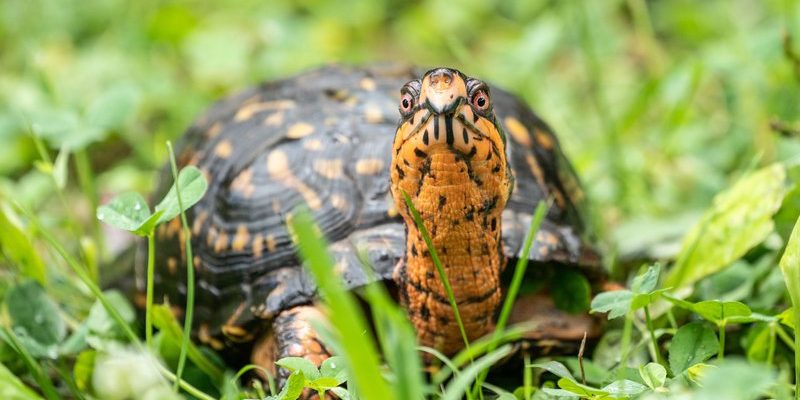
Imagine if you had a cozy shell you could retreat into when the world gets tough. That’s exactly what box turtles do! They are well-equipped to handle extreme temperatures, limited water supplies, and even threats from predators. In this blog, we’ll explore the adaptations and survival strategies of box turtles, illuminating their unique ways of thriving in nature’s toughest settings.
Understanding the Box Turtle
Box turtles belong to a group of reptiles called Testudines. They’re known for their distinctive, hinged shells that allow them to fully retreat into their carapace when threatened. This feature isn’t just a cute party trick; it’s a vital defense mechanism. By closing their shells, box turtles create a solid barrier against predators, which can include raccoons, birds, and even larger mammals.
There are several species of box turtles, with the common box turtle being one of the most recognized. These little guys are found across North America, particularly in the eastern and central regions. Their vibrant shells often boast beautiful patterns that can vary from one turtle to another, just like fingerprints. Honestly, it’s these striking appearances combined with their hardy nature that makes them a favorite among turtle enthusiasts.
Adaptations to Temperature Extremes
Box turtles are remarkable when it comes to dealing with temperature fluctuations. They are ectothermic, meaning they don’t generate their own body heat. Instead, they rely on their environment to regulate their body temperature. This can be a challenge, especially in regions that face severe heat in summer and cold in winter.
To cope with high temperatures, box turtles often seek shelter under leaves, logs, or rocks during the hottest parts of the day. Think of it like finding a nice, shady spot to relax when it’s blazing outside. They also burrow into the ground or hide in their shells, where the temperature tends to stabilize. When winter rolls around, box turtles enter a state called brumation, similar to hibernation. They dig into the soil, slowing down their metabolism to conserve energy until the warmer days return.
Conserving Water in Dry Environments
In areas where water is scarce, box turtles have developed some impressive techniques to survive. Unlike many animals that need to drink regularly, these turtles can absorb moisture from the food they eat. A diet rich in fruits, vegetables, and insects provides the hydration they need. They’ll munch on juicy berries or patches of grass, taking in moisture while fueling their bodies.
Additionally, box turtles can go for long periods without drinking water directly. They have a remarkable ability to store water in their bodies, allowing them to endure dry spells without significant harm. Think about it—it’s like they have their own personal water bottles tucked away for emergencies. This ability makes them incredibly resilient in arid environments.
Food Sources and Foraging Skills
When it comes to finding food, box turtles are opportunistic eaters. Their diet primarily consists of a mix of plant material and small animals. You might find them snacking on leaves, berries, mushrooms, and even insects or small snails.
Their slow, deliberate way of moving doesn’t mean they can’t find food effectively. Box turtles are known to use their keen senses to locate meals. Their sharp eyesight helps them spot food from a distance, while their sense of smell guides them closer. Here’s the thing: slow and steady really wins the race in the turtle world. They can spend hours foraging, which is often rewarded with a delicious and nutritious meal.
Predator Avoidance Tactics
Being small and slow has its challenges, especially when larger predators are on the prowl. Box turtles have developed several clever strategies to avoid becoming someone’s lunch. As mentioned earlier, their ability to withdraw into their shells is vital for protection. But they also employ a few other tactics.
When threatened, you might notice a box turtle freeze in place. This behavior helps it blend into the surroundings, making it less visible to predators. They can also release a strong-smelling musk as a defense mechanism, which can deter some would-be predators. Imagine an unexpected splash of perfume that sends potential attackers running the other way!
Impact of Human Activity
While box turtles are resilient, they’re not immune to the challenges posed by humans. Habitat destruction, road traffic, and illegal pet trade are significant threats to their populations. When forests get cleared for development, or roads are built through their habitats, it disrupts their way of life.
Additionally, if box turtles venture onto roads, they can easily become victims of traffic. It’s heartbreaking to think about how such a tough little creature faces dangers that are entirely out of its control. Conservation efforts, like creating safe passageways and educating the public, can help mitigate these risks. After all, we can all do our part to ensure these unique animals continue to thrive.
The Box Turtle’s Role in Ecosystems
Box turtles play an essential role in their ecosystems. By eating various plants and small animals, they help to maintain a balance in their habitats. They also act as seed dispersers. When they munch on fruits, the seeds often end up carried away in their digestive systems. Once nature takes its course, those seeds can sprout in new locations, contributing to the growth of plants and ensuring healthy ecosystems.
This important role shows just how interconnected life is. Every creature, no matter how small, has its place in the great web of nature. By protecting box turtles, we protect the delicate balance of ecosystems they inhabit.
In conclusion, the box turtle is a tiny hero equipped to handle the harshest of environments. Through their unique adaptations, clever survival strategies, and vital roles in nature, they remind us of the resilience and complexity of life. Next time you see one, take a moment to appreciate how much they can teach us about survival, adaptability, and the importance of preserving our natural world.

